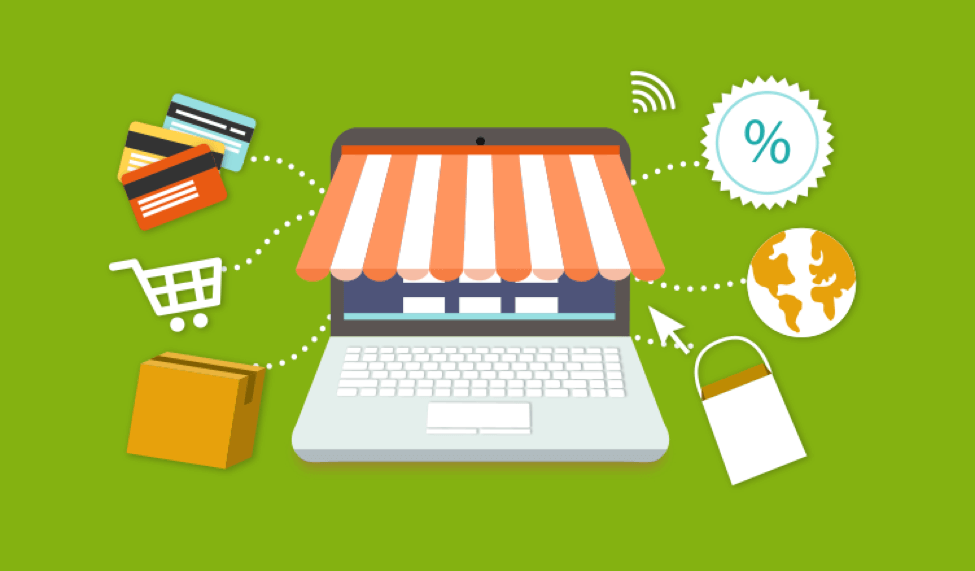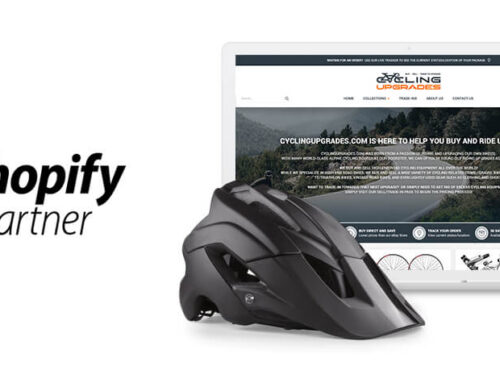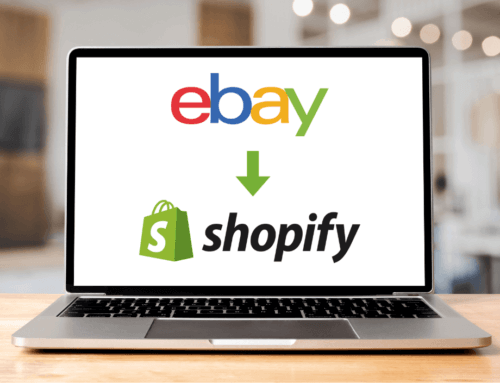
Building an online store is easier said than done. There are so many factors to take into consideration that sometimes it can be overwhelming.
But, like anything in life, it’s important to mind the details if you want to have any success.
And, no matter how experienced you are with online retail, there’s always something you could do better.
That’s why we’ve created this list of the top 10 Dos and Don’ts for your online store.
Whether you’re an ecommerce newbie or a chiseled veteran, you’re sure to find some golden words of wisdom in this list.
(And, read through the whole list for a Bonus tip at the end.)
Here are the top 10 Dos and Don’ts when it comes to your online store.
1) DO Prioritize SEO
Did you know that 46% of people use a search engine to begin the buying process?
That means that they’re not going directly to your store when it’s time to shop.
Instead, they go to Google and type in something like “red strapless heels,” “oversized teddy bear” or “bamboo back scratcher,” and then browse the top results for the best products.
If your store ranks low for SEO, you’re just not going to be seen, plain and simple.
That’s why your store NEEDS to be towards the top of the list.
Optimizing your site for search engine results isn’t a fast and immediate process. But then again, nothing worth having ever is.
Learn Search Engine Optimization, and do what it takes to get your store pushed to the top! (For example, write a blog post every week, link to websites that talk about your niche, and guest post on those websites.)
2) DON’T Have a Cluttered Checkout Process
This is an absolute sales killer. Research has shown that the less hoops your customer has to jump through, the more likely they will be to purchase.
That means, only have one checkout page. Don’t send them through 2-3 pages just to check out.
Also, don’t ask for every single piece of information about them. Name, email, and shipping and payment info is enough.
Your customer wants their product and they want it now (or in 2-3 business days).
So give it to them.
3) DO Send Cart Abandonment Emails
I just mentioned that you want to have your customer’s email address in your checkout process. This is part of the reason. While it might seem time consuming to build an email list, it’s absolutely worth it for your bottom line.
A composite of 41 studies on cart abandonment shows that, on average, there’s a 69.57% cart abandonment rate in online stores.
In other words, more than 2 out of every 3 online shoppers quit before finalizing payment.
Higher than you expected?
These customers took the time to put the product in their cart, which obviously means they were interested in the first place.
So, something as simple as sending an email reminding them about the item can be enough to finalize the sale.
Do this, and you’ll be surprised how much your sales will improve.
4) DON’T Make Profiles Mandatory
You want your customers to create a profile. There’s no doubt about that.
First of all, it provides you their email address, allowing you to send them valuable offers at no cost to you.
Plus, having a profile makes them more likely to return to your store. (It’s the psychology of a mental commitment.)
But making profiles mandatory only shoots yourself in the foot.
As mentioned up above, your checkout process should be as seamless as possible. Which means that you should always offer a guest checkout option.
No one likes being forced to do anything, and if you make having a profile mandatory for checkout, your customers will reward you by going straight to your competitor.
5) DO Make the Extra Effort in Product Description/Display
When it comes to your product descriptions, making an extra effort doesn’t mean writing a book.
What it DOES mean is giving the customer all the useful information while highlighting all the benefits.
If you’re not sure that your descriptions are up to snuff, double check with the toga rule: Make them long enough to cover everything, but short enough to keep’em interested.
The pictures, on the other hand, are a great way to show your customers exactly what they want to see. There should be multiple pictures from various angles, and they should especially highlight the benefits.
Being able to see your products from various angles, complete with zoom, builds a lot of trust in the customer.
But, you can go even further than that.
To REALLY take the extra step, incorporate video demonstrations.
According to Forbes, 90% of customers said that videos helped them decide whether to purchase a product.
Making a video demonstration is simple. Just show off your product’s benefits in real-world situations.
6) DON’T Have Ads
Period.
If you’re using your online store to sell ad space to others, you’re defeating the purpose.
The additional income is NEVER worth turning away customers. Especially when if you want your customers to return.
Ads and popups can not only be visually fatiguing to your customer, they can create distrust in your store.
We’ve mentioned time and again how you need to streamline your store to optimize conversions, and cutting the ads is a must, if you’re really serious about making money.
7) DO Create a Buyer Persona
What’s a Buyer Persona?
Basically, it’s an idea of a type of person that represents your target customers.
While it might seem a little silly at first, creating a Buyer Persona will help you hone your marketing strategies to target the people you’re trying to reach.
Here are a few things you’ll want to ask when it comes to creating your Buyer Persona:
– Age?
– Gender?
– Marital status?
– Children?
– Income?
– Education?
– Goals/challenges?
– Career?
– What is a typical work day like?
– What do they value?
– What do they fear?
– What’s really important to them when it comes to a product like yours?
Asking these questions will allow you to tweak your site, descriptions, and ads to cater to your ideal customer.
The result?
More sales, of course.
8) DON’T Ignore Your Customer Service
Prompt and effective Customer Service is one of the most important parts of your online store.
Without it, it’s only a matter of time before your customers start abandoning you in favor of someone more helpful.
Plus, when people don’t receive good customer service, they talk about it twice as often as when they receive good customer service.
And trust me, your would-be future customers will be listening.
9) DO Optimize for Mobile
62% of smartphone owners use it to complete online purchases.
That means that more than half of mobile users are buying while on their phone.
You can have the nicest site in the world. It can have all the bells and whistles, and be streamlined for conversion. But if it looks bad on mobile (or worse, doesn’t work), then you’re going to miss out on a ton of sales.
Plus, optimizing for mobile allows you to save their payment and shipping info, which means they’ll have one less step before checkout next time around. Streamlining is a beautiful thing.
The fact is, more and more people are choosing mobile as their primary purchasing platform, and this trend isn’t going anywhere. To ignore the mobile platform and stick with only desktop is like being in 1992 and saying the internet is just a fad. It’s a bad look.
10) DON’T ASSUME THINGS ARE AS GOOD AS THEY COULD BE
You’ve got a beautiful site. Everything is working as planned. The landing pages are worded perfectly. There’s absolutely nothing else you can do to improve it.
But how do you know?
The fact is, you don’t. Not unless you regularly perform A/B tests and continually go with the higher-converting version.
It’s simple to do, and yet so few do it. And that’s exactly why you should.
Have 2 landing pages duke it out to see which one converts better.
See if tweaking your checkout process brings in more purchases. Even something as simple as changing the color of a button can have profound effects.
The truth is, when it comes to having the “best” version of your site, you don’t know what you don’t know.
Test, test, and test some more. It’s the only way to know for sure that your store is doing the best it can.
BONUS: DO Offer Free Shipping
We’ve all been there. We’re shopping online, and we’ve found a product and price we’re happy with. So, we go to checkout, and all of a sudden the price has shot up.
What gives?
Shipping, that’s what!
Shipping is a cost the average customer doesn’t think about when filling their cart. So when it comes up at the end, it’s unexpected.
And an unexpected cost is the number-one reason for cart abandonment.
Don’t make your customers feel gross. Get rid of shipping costs.
Follow these Dos and Don’ts, and your online store will thrive. Ignore them at your own peril. Just don’t say we didn’t warn you.
Author Bio:
Kate Lynch is a business and digital marketing blogger who spends her entire day writing quality blogs. She is a passionate reader and loves to share quality content prevalent on the web with her friends and followers, keeping a keen eye on the latest trends and news in those industries. Currently, she is associated with Omnisend, an e-commerce marketing automation platform built for growing e-commerce businesses. Follow her on twitter @IamKateLynch for more updates.








